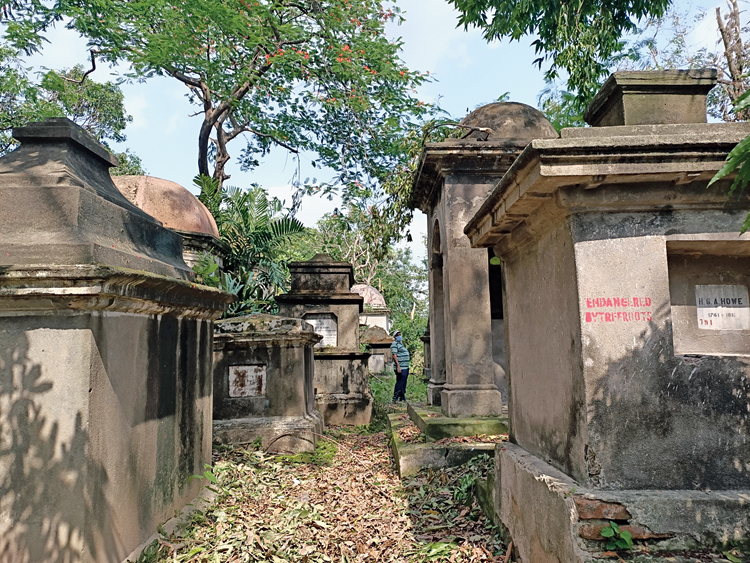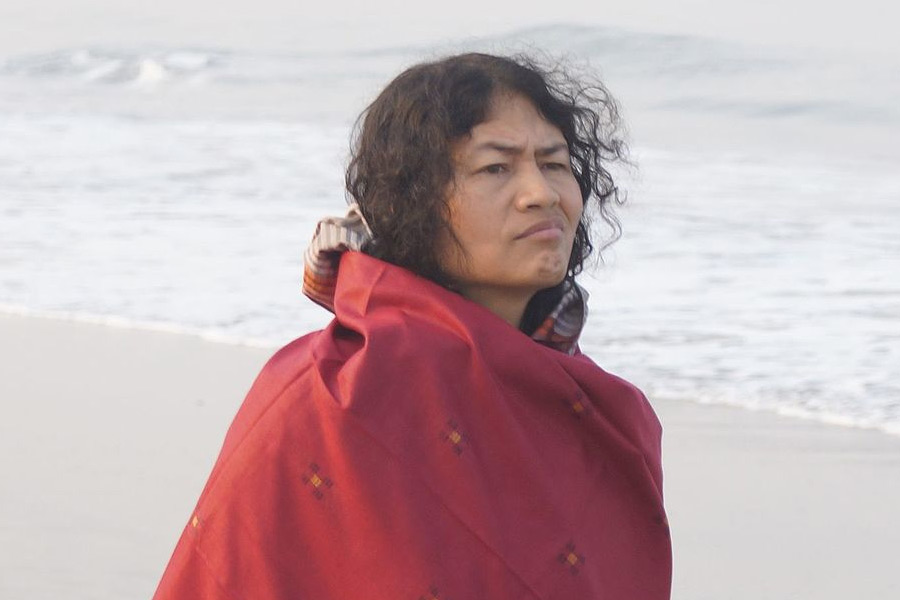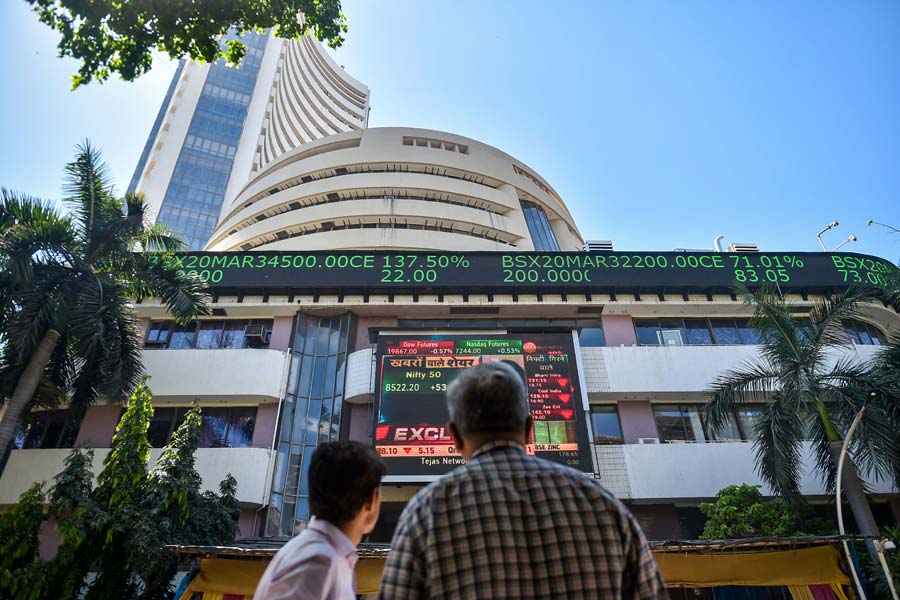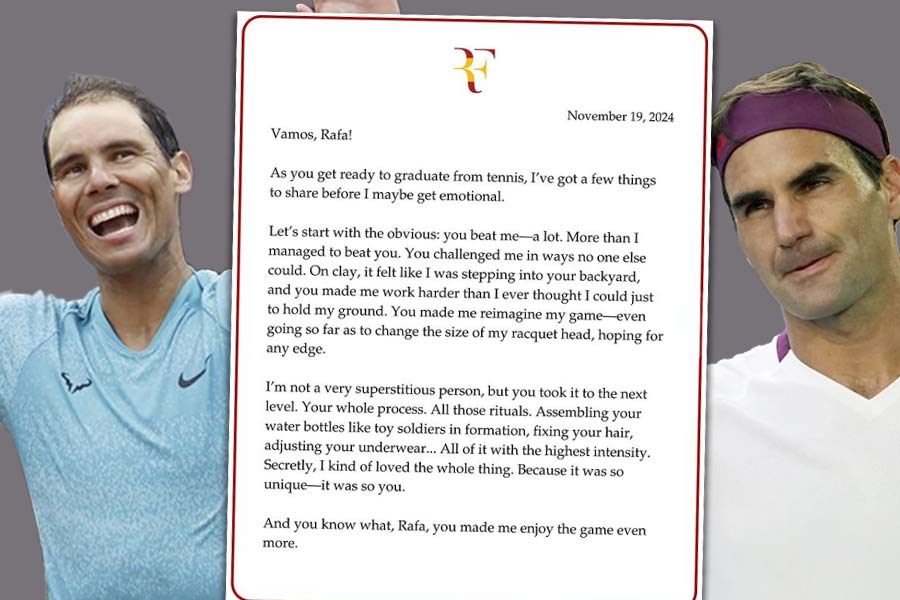Bijay Singh frantically called the gardeners of South Park Street Cemetery on May 20 as Cyclone Amphan raged across Calcutta.
Singh, who has been working as the cemetery’s caretaker for over 20 years, was worried that the storm would damage the heritage site. “The iconic cemetery is filled with unplanned vegetation, mostly large and deep-rooted mango trees; I was worried if any of these trees got uprooted or a large branch fell off, the adjacent tombs would be heavily damaged.”
But when Singh, who’s in his late 50s, stepped into the cemetery — home to the tomb of educationist and reformist Henry Louis Vivian Derozio among other prominent personalities — the next day, he found all the tombs intact apart from some minor damages here and there.
Neither were any of the trees uprooted in the storm, which blew at almost 130 kmph, nor had any of the broken branches fallen on the mausoleums.
The South Park Street Cemetery, which dates back to 1767, is maintained by the Christian Burial Board, a statutory body. The board has identified close to 350 tombs as “Endangered by Tree Roots”. This means large trees have spread their roots deep into the soil and they threaten to crack these tombs open from inside.
“But the tombs were unaffected… We have been told that the strength of the roots prevented these trees from getting uprooted in the storm,” Singh said.

Singh, who has been working as the cemetery’s caretaker for over 20 years, was worried that the storm would damage the heritage site.
The cyclone has displaced 65 large trees in Lower Circular Road Cemetery, a stone’s throw from South Park Street Cemetery and run by the board, Ashim Kumar Biswas, the board secretary, said.
He said he was “pleasantly surprised” that the iconic cemetery at Park Street had survived the wrath of Amphan. “There are about 1,250 standing tombs in this cemetery and most of them are works of art. Any damage would have been irreparable.”
Dilip Chakraborty, former divisional forest officer, forest utilisation division, isn’t surprised, though. “The logical explanation is these trees hold on to the soil so strongly that even a cyclone like Amphan couldn’t displace them.”
Ruma Pal, the head of Calcutta University’s botany department, had a different take on why trees of the same family were uprooted in one and not in the other. “The trees aren’t densely placed in the Lower Circular Road Cemetery… so, the storm could unleash its full strength there. The other cemetery is on a smaller area with dense vegetation, which most likely resisted the wind’s force. It is also possible that the trees at Park Street have firm roots because they are much older.”

The strength of the roots prevented these trees from getting uprooted in the storm
The Lower Circular Road Cemetery is spread across roughly 25.4 acres while the South Park Street Cemetery is on 8 acres.
“These tombs are made of lime and mortar — a composition of lime and an aggregate such as sand, mixed with water — which could absorb water before releasing it. So, water pressure inside the structure wouldn’t burst it open,” Souvik Mukherjee, who teaches English at Presidency University and a history enthusiast, who has researched on cemeteries in Calcutta, said.
This technology, according to Mukherjee, isn’t available these days. There are a few tombs in South Park Street Cemetery, which are primarily cement structures. “Cement structures don’t release water and hence are susceptible to damage,” he said.











